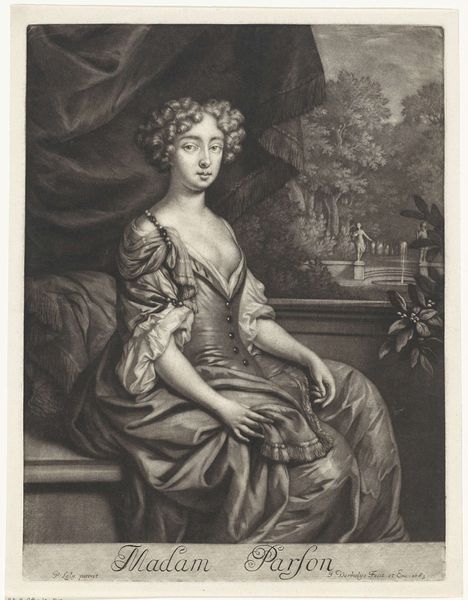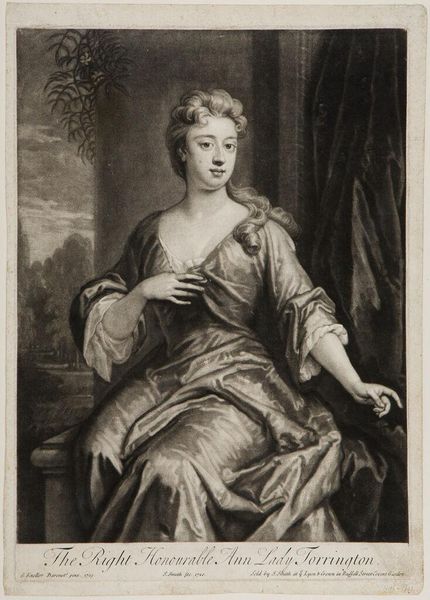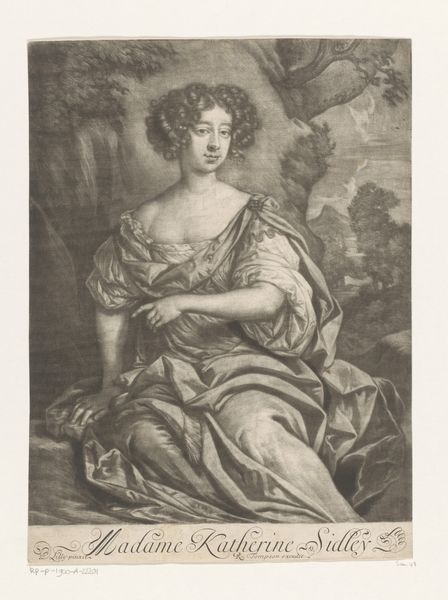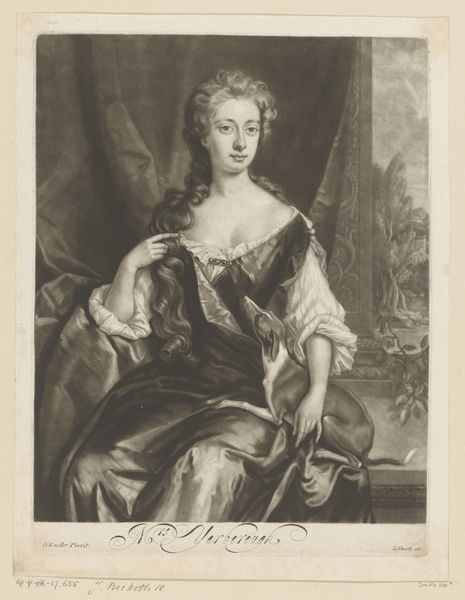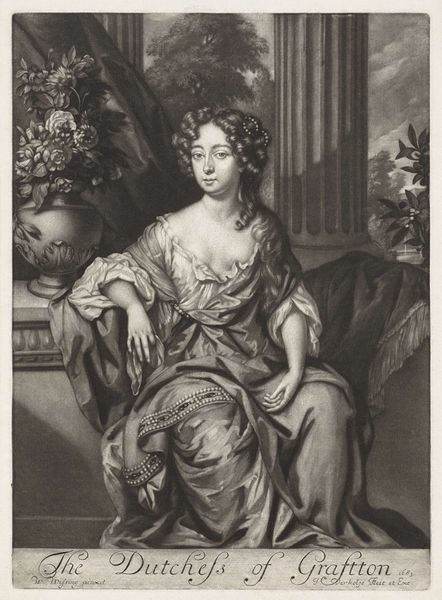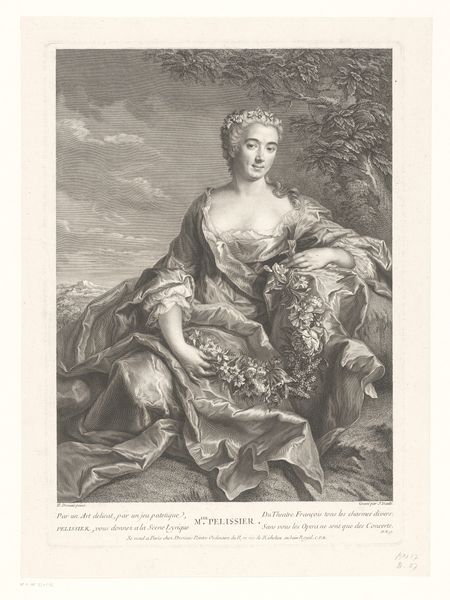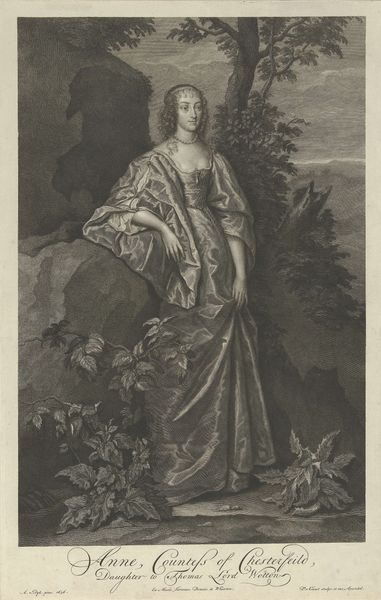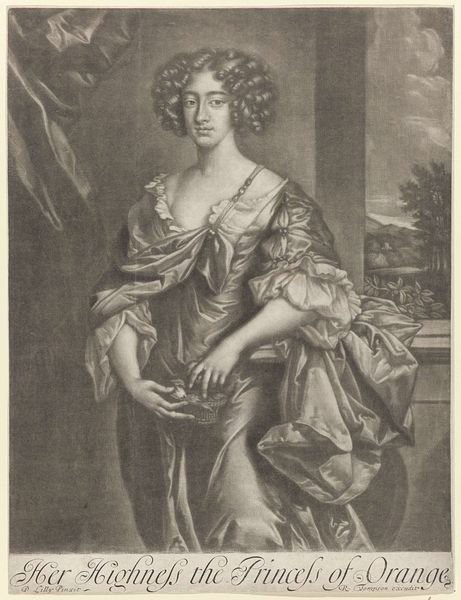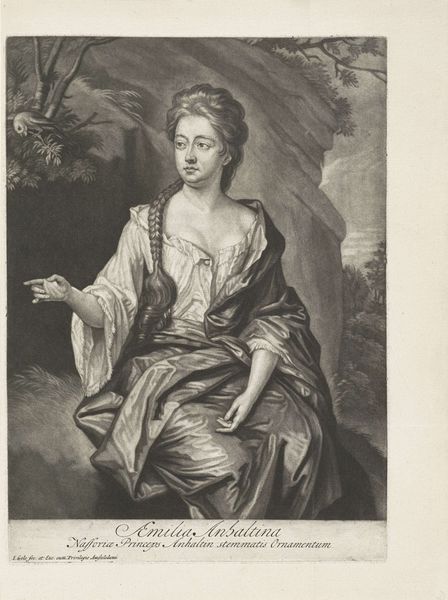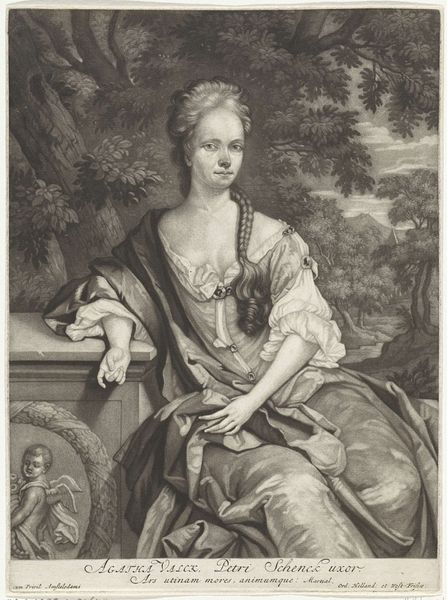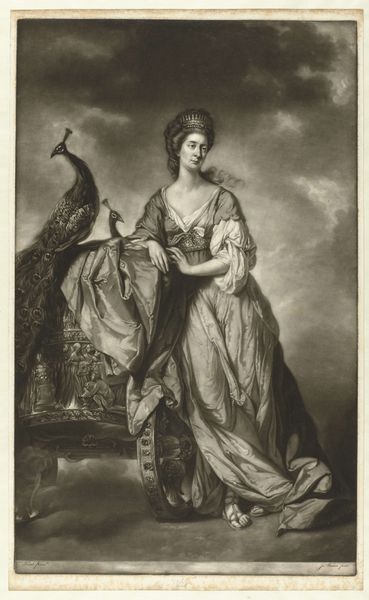
print, engraving
#
portrait
#
baroque
# print
#
history-painting
#
engraving
Dimensions: height 353 mm, width 251 mm
Copyright: Rijks Museum: Open Domain
Editor: We’re looking at “Portret van Ellen Gwynne,” a 1751 engraving by Pieter van Bleeck. It feels so opulent, with all the drapery and the suggestion of a lush landscape behind her. It’s fascinating how a print can convey such richness. How do you interpret this work within its historical context? Curator: It’s tempting to simply view this as a pretty picture, but the engraving itself—and its widespread distribution—is crucial. Ellen Gwynne was a celebrity figure, and Charles II's mistress, and prints like this democratized access to her image. This wasn't just about artistic skill; it was about shaping public perception of power, beauty, and celebrity culture within the societal frameworks of the 18th century. Editor: So, the medium is part of the message? A painting would have remained within a specific collection, limiting exposure. But the engraving allows mass reproduction and wider distribution. Curator: Exactly. How does the choice of representing Gwynne as "A celebrated Actress and distinguished Favorite of King Charles the 2nd" on the print itself frame her role within the socio-political landscape? What does it tell us about the accepted modes of celebrity? Editor: I guess it’s branding in a way. Not just “Ellen Gwynne,” but “Ellen Gwynne, known for these things.” It’s fascinating how seemingly straightforward images are laden with the politics of their time. Curator: Precisely. Consider the baroque style as well – was this visual style chosen simply for its ornate qualities? What effect might that choice have on viewers, given its associations with power and drama? Editor: I never considered that before, framing it as a socio-political comment through printing, that makes me think about art very differently! Curator: That intersection of artistic expression and cultural power dynamics shapes our understanding of art history itself.
Comments
No comments
Be the first to comment and join the conversation on the ultimate creative platform.
